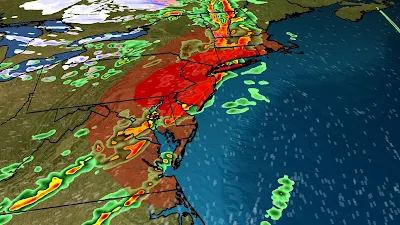The United States is a vast and diverse country, known for its varied climate and extreme weather conditions. From scorching summers to bone-chilling winters, and everything in between, the USA experiences a wide range of weather patterns that can have a significant impact on daily life. In this article, we'll explore the climate and current season in the USA, dive into the extremes of cold and heat, and provide essential information on staying informed about severe weather conditions.
What is the Climate Weather in the USA?
The United States has a diverse climate due to its sheer size and geographical variations. Here are some key climate regions:
1. Eastern Seaboard: The eastern coast, including cities like New York and Miami, experiences a humid subtropical climate with hot, humid summers and mild winters.
2. Midwest: States like Illinois and Ohio have a continental climate with cold winters and warm summers.
3. Southwest: Arizona and Nevada have a desert climate with scorching summers and mild winters.
4. West Coast: California enjoys a Mediterranean climate with mild, wet winters and hot, dry summers.
5. Mountain States: States like Colorado and Wyoming have a highland climate with cold winters and cool summers.
6. Alaska: Alaska experiences an Arctic climate with extremely cold winters and cool summers.
7. Hawaii: Hawaii boasts a tropical climate with consistent temperatures throughout the year.
What Season is in the USA Now?
The season in the USA varies depending on the region. As the country is vast, it can be in different seasons simultaneously. Generally, during July, much of the country experiences summer. However, northern states like Alaska might still have remnants of their colder winter season.
How Cold Does It Get in America?
The United States can get exceptionally cold, especially in the northern states and Alaska. In areas like Fairbanks, Alaska, temperatures in winter can plummet to well below -30°F (-34°C). Even in the lower 48 states, places like International Falls, Minnesota, often referred to as the "Icebox of the Nation," experience frigid winters with temperatures regularly dropping below -20°F (-29°C).
What is the Hottest It Has Been in America?
The hottest temperature ever recorded in the USA was 134°F (56.7°C) in Furnace Creek Ranch, Death Valley, California, on July 10, 1913. Death Valley is renowned for its scorching temperatures and holds the record for the highest air temperature on Earth.
How Hot is Summer in America?
Summer in the USA varies in intensity depending on the region. In the southern and southwestern states, such as Arizona and Texas, summer temperatures often soar above 100°F (38°C). On the other hand, states in the Pacific Northwest, like Washington and Oregon, typically experience milder summers with temperatures ranging from the 70s to 80s°F (21-32°C).
Staying Informed About Severe Weather Conditions
Given the diverse climate and the potential for extreme weather in the USA, it's crucial to stay informed and prepared. Here are some tips:
1. Weather Apps: Download weather apps like The Weather Channel, AccuWeather, or the National Weather Service's app for up-to-date forecasts and alerts.
2. Emergency Alerts: Enable emergency alerts on your smartphone to receive notifications about severe weather conditions in your area.
3. NOAA Weather Radio: Invest in a NOAA Weather Radio for real-time updates and alerts, especially in regions prone to severe weather events.
4. Local News: Keep an eye on your local news channels and websites for weather updates and emergency information.
5. Emergency Kit: Prepare an emergency kit with essentials like water, non-perishable food, flashlights, and first-aid supplies in case of severe weather-related disruptions.
6. Stay Informed About Storms: If you live in areas prone to hurricanes or tornadoes, pay close attention to storm forecasts and evacuation orders.
7. Follow Authorities: Follow instructions and guidance from local authorities and emergency management agencies during severe weather events.
In conclusion, the United States experiences a wide range of weather conditions due to its diverse geography. Whether you're facing extreme heat or bitter cold, staying informed and prepared is key to ensuring your safety and well-being. Now, if you're looking for a soothing beverage to enjoy while tracking the weather, check out the "Medicine Ball" from Starbucks, a secret menu item known for its comforting properties. You can learn more about it in this article. Stay safe, stay informed, and be weather-wise in the USA! 🌦️🌪️❄️🔥



